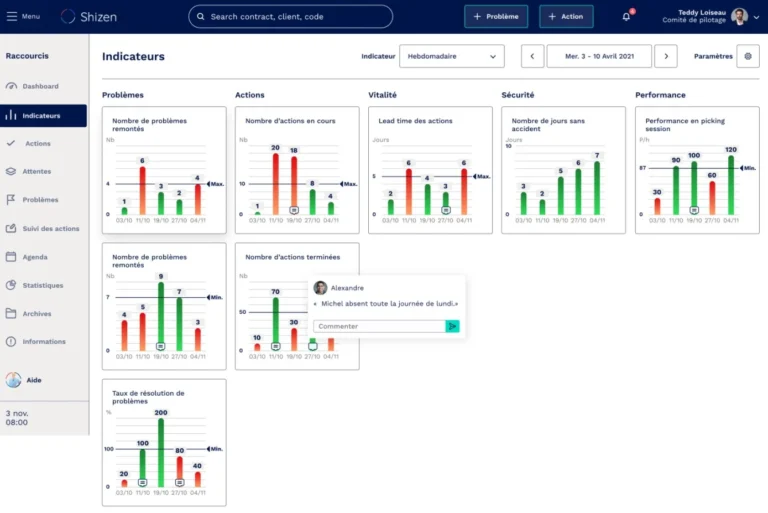Although the trend has increased sharply over the past 20 years, not only do women remain a large minority, particularly in positions of responsibility, but they are mainly concentrated in 3 industrial sub-sectors.
So what is the real place of women in the industry?
Like engineers, women still struggle to find their place in the industrial sector, although the situation has been changing for the better in recent years. Even today, they are essentially divided into three main industrial sub-sectors:
- Textile-clothing where they are the majority with 61%
- The pharmaceutical industry with 54% of the workforce
- Agrifood where they hold 43% of positions
In 2013, aeronautics still had only 20% of women in its workforce according to GIFAS (Grouping of French aeronautical and space industries).
To improve this situation, Agnès Pannier-Runacher, Secretary of State to the Minister of Economy and Finance, created in March 2019, under the aegis of the National Council for Industry, the Council for Mixity and professional equality in industry. The latter has designed a precise and ambitious action plan to strengthen their presence by creating the conditions for parity to be put in place spontaneously. He has thus worked on major subjects such as education, educational guidance and career management. We have to succeed in inspiring young girls, opening their eyes to the industry to get them to dream of making a career out of it. A formidable pool exists: all you have to do is enhance it and make it exist. Industry must be the spearhead for professional equality between women and men, a constant fight and lever for competitiveness.
“Individually, it means allowing women to be better paid on average in a growth sector, and to make up for the overall gap with the wages received by men. This is enough to prevent many from also being the adjustment variable of the looming economic crisis. Elisabeth Moreno, Minister for Equality between Women and Men
Raising awareness during training
Christine Kerdellant, Editorial Director at L’Usine Nouvelle, points out that self-censorship is a problem to be taken seriously: “Women are less daring to put forward their qualities to perform this or that function. Hence the importance to have role models.
Another major obstacle is the under-representation of girls in engineering schools. Stereotypes appear from an early age, as evidenced by the survey conducted by the Elles Bougent association in 2016 on “Women, industry, technology and innovation” among 1,000 female engineers, 500 female students in science and technology, and 500 middle school and high school girls. It thus appears that in secondary school, girls are primarily interested in professions in the medical and paramedical sector, luxury goods and the media. The boys are interested in aeronautics, space, automobiles and robotics.
Another striking fact: it also appears that the journey is longer for a woman in construction and in industry, while it will be much faster in trade and services! Stereotypes die hard and parity is still a long way off…
In college and high school, both girls and boys say they are ready to study science. So why such a discrepancy then?
According to the survey by the Elles Bougent association, it is mainly due to a lack of information for 70% of them. Another important point: young people have a more precise idea of what digital is (65%) than industry (55%).
Survey “Women, industry, technology and innovation”, Elles move, 2016
A lack of information and communication at all levels which pushes young women to move towards other careers, especially since they are often undervalued by companies in the sector themselves! The promotion of role models then becomes more than necessary to encourage young graduates. Especially since the number of women in engineering schools is also tending to increase, now approaching 30% (all sectors combined).
Hire to promote diversity
Diversity is a vector of performance, and depriving yourself of 50% of the population is an aberration, insists Sabine Lunel-Suzanne, Transformation & CSR Director at EQUANS France.
An example of concrete application in the automotive sector is the design of driver’s seats also suitable for women, with coatings that do not run tights, for example, because the latter are essentially the source of car orders. To achieve this result, it is relevant to call upon, during their designs, collaborators who will think about these issues.
For Christine Kerdellant, Editorial Director at L’Usine Nouvelle, highlighting the initiatives taken by companies that talk about their experiences, such as work meetings that do not exceed 7 p.m. for example, is very important. There is also a discourse to hold on the interest of work by demystifying the negative image of the industry, “dirty” and “painful”.
Christine Kerdellant underlines: “The subject of French presenteeism is indeed very important: returning home earlier to take care of children is unconsciously still too often frowned upon and prohibitive in terms of professional development. Men therefore stay later than women, but not necessarily by choice or usefulness. Similarly, they do not apply for leadership positions because they fear that they will be asked to stay later and therefore sacrifice their family life. These ways of doing things. Men and women have everything to gain, the former also having the right to claim an important place in the home. “
The Role Models solution is once again on the table, the idea being to highlight models of women who are perfectly fulfilled in their work and at home. What Industri’Elles does in particular, a collective with a LinkedIn group, supported by the State, and whose objective is to bring together at least a thousand female ambassadors of the industry, in the media and in schools , to show that a career there is possible.
Promote to positions of responsibility
In 2015, KPMG carried out a study on the place of women leaders in France highlighting the slow rise of women in management positions: only 14% occupied them, i.e. 1.2 points more than in 2003.
However, the good news came from the notable changes in certain “traditionally” male sectors such as energy with +130% of female leaders in 10 years, agri-food industries with +23.6% and real estate with an increase of 21 .5%.
Two female CEOs of major industrial groups have recently testified to the feminization of their governing bodies: Christel Bories, who heads Eramet, a mining and metallurgical company, announces 38% of women on its executive committee; for her part, Emmanuelle Quiles at the head of the pharmaceutical company Jansen has a score of 65%. Changes are therefore possible!
“The place of women in industry is a social issue, but it is also an economic and competitive imperative for our companies, she says. Studies prove it: more diversity within a company, it’s more performance.” Agnès Pannier-Runacher, Minister Delegate to the Minister of Economy, Finance and Recovery, in charge of Industry




